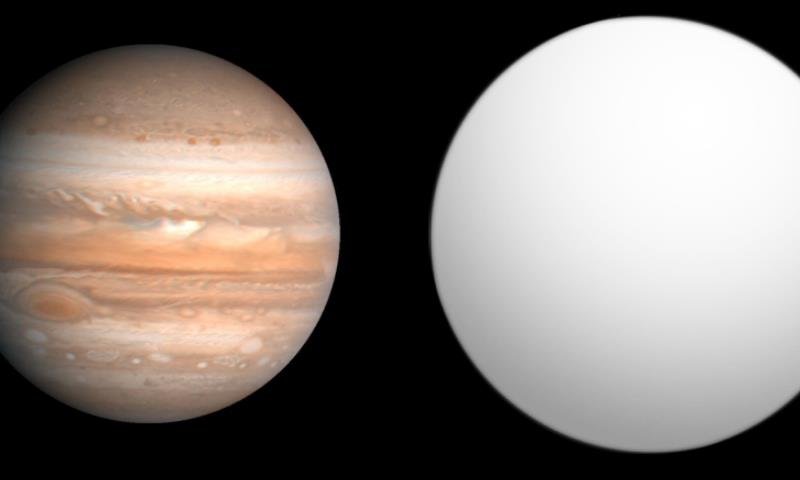Astronomers have been left baffled by the discovery of an exoplanet with properties so unusual, it defies current understanding of planetary formation. Dubbed WASP-193b, this “super fluffy” planet has a density so low, it has been likened to cotton candy, challenging scientists to rethink the cosmic playbook of planet birth and evolution.
The discovery of WASP-193b, located 1,200 light-years away, has sent ripples through the astronomical community. This exoplanet is 50% larger than Jupiter yet possesses a mass that is seven times less. Its unique composition, primarily of light gases such as hydrogen and helium, contributes to its exceptionally low density.

The revelation of WASP-193b’s characteristics has sparked a flurry of research and speculation. How did such a planet form? What does its existence tell us about the diversity of celestial bodies in our galaxy? These are the questions driving the scientific inquiry forward.
Challenging Conventional Wisdom
WASP-193b’s existence is a conundrum for scientists who have long relied on established theories of planetary formation. Traditional models cannot readily explain how a planet of such size can maintain such a feather-light composition.
The planet’s discovery suggests that there may be unknown processes at play in the cosmos, capable of creating planetary bodies that are vastly different from the rocky worlds and gas giants we are familiar with. This challenges astronomers to expand their theories and consider new possibilities in the vast expanse of space.
The Future of Exoplanetary Research
The study of WASP-193b is not just about understanding one peculiar planet; it represents a broader quest to comprehend the universe’s capacity for diversity. As technology advances, so too does our ability to detect and analyze exoplanets that push the boundaries of our knowledge.
WASP-193b is a beacon, illuminating the path toward a deeper understanding of the cosmos. Its study may reveal new insights into the formation and evolution of planets, and by extension, the potential for life beyond our solar system.
















